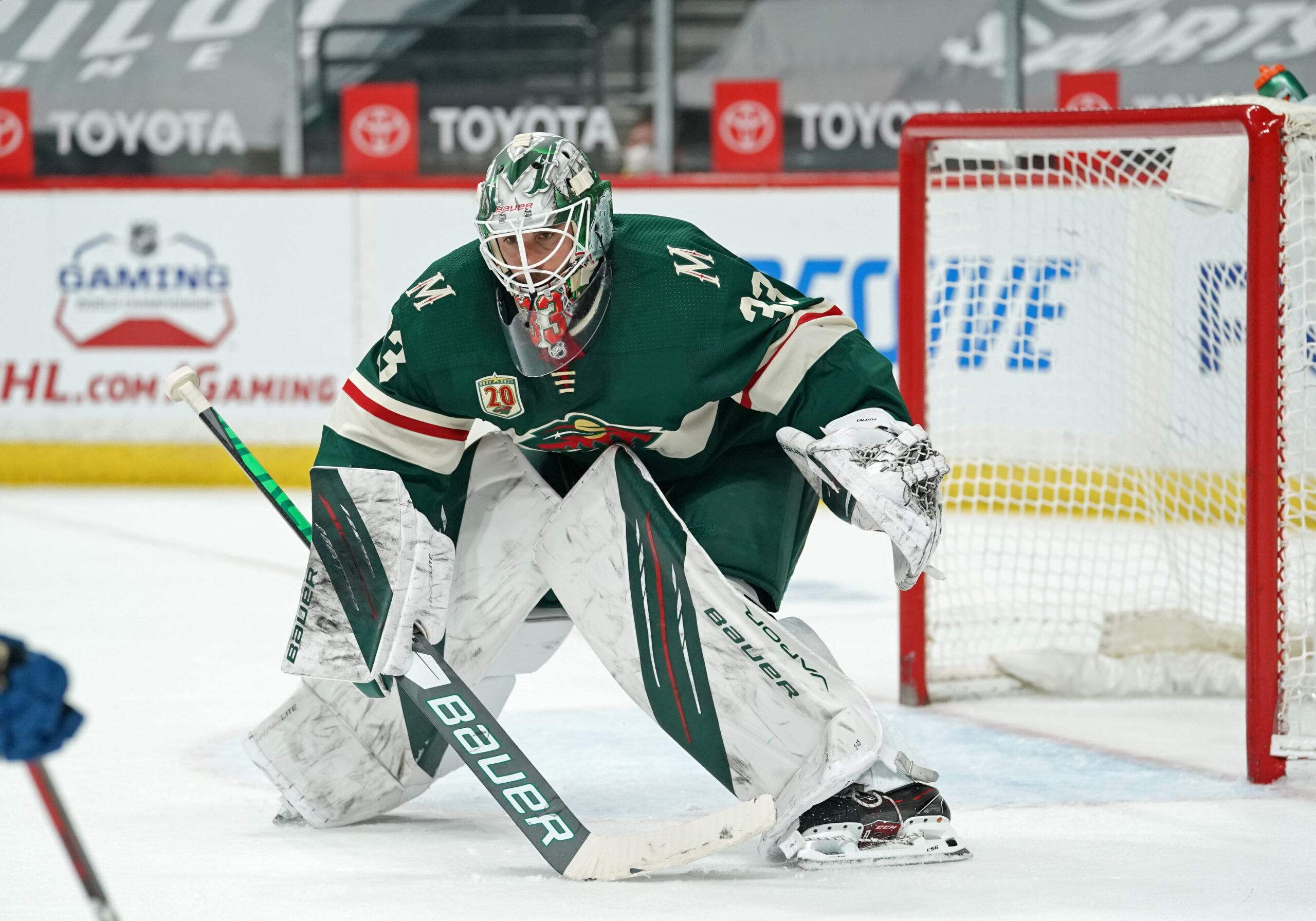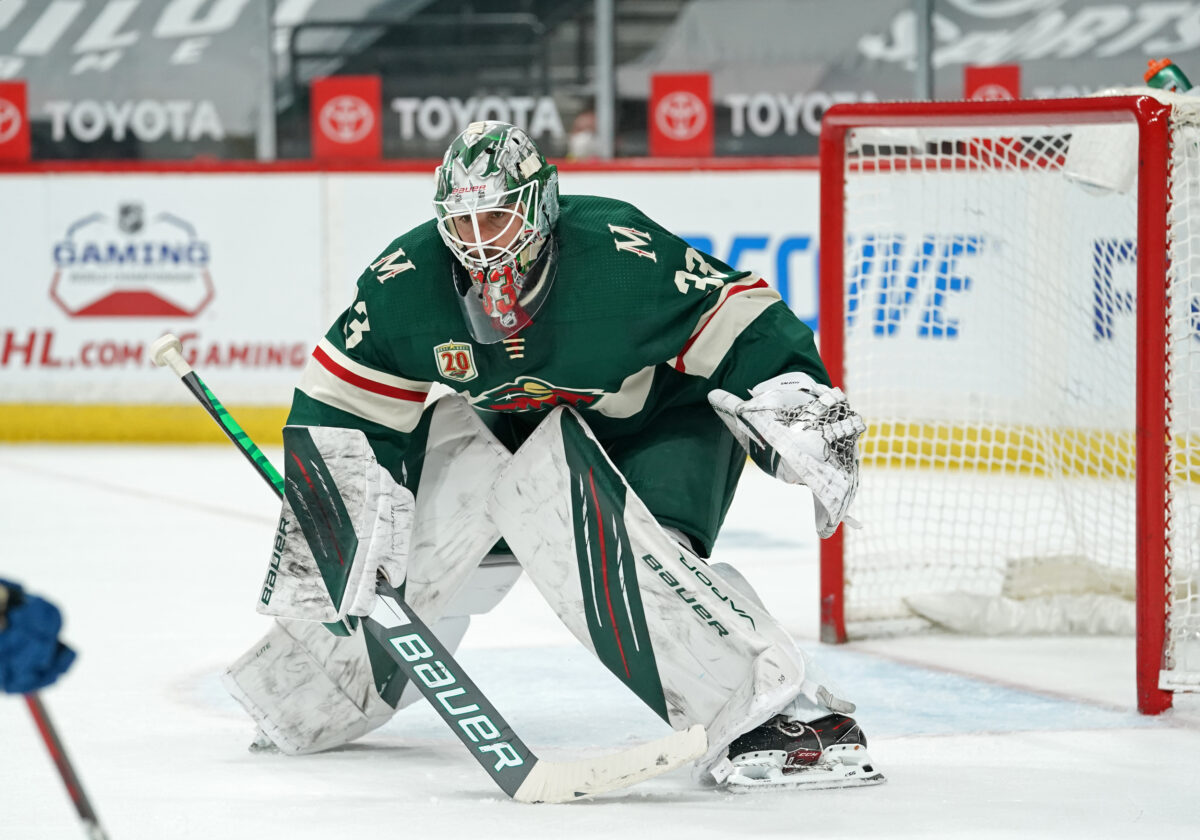
One of the biggest factors behind the Minnesota Wild’s successful start to the season has been goaltending. The Wild thought they found the missing puzzle piece when they acquired Devan Dubnyk from the Arizona Coyotes back in 2015, however, his tenure as a starter turned out to be a disaster that eventually held the team back from making any significant noise in the postseason.
Dubnyk garnered Vezina votes in two different seasons, including the 2014-15 campaign when he was a Vezina finalist. To add another layer, he was a three-time All-Star. His reputation cemented him as one of the better goalies during his tenure with the Wild. The complication is the fact that the discrepancy between his numbers and his reputation are nowhere near each other. His awful – among the league’s worst – underlying numbers were disguised behind one of the best defensive cores in the league.
Fast forward to the last offseason, the Wild traded Dubnyk to the San Jose Sharks and replaced him with veteran goaltender Cam Talbot in free agency, who hasn’t been able to replicate his magical 2016-17 campaign. The goal was that he would be a reliable presence between the pipes this season and be a massive upgrade to Dubnyk.
Before evaluating Talbot’s excellent start to the season, it is important to examine Dubnyk’s numbers during his Wild tenure. It will provide the structure for the argument and display just much more effective Talbot has been this season which has been a huge boost to a club that boasts one of the best defensive cores in the league.
Dubnyk’s Numbers During Wild Tenure
The harsh reality is that Dubnyk was hidden behind a superior defensive team. Among high-danger chances allowed, the Wild ranked 1st (688) in 2014-15, 9th (814) in 2015-16, 1st (720) in 2016-17, 1st (787) in 2017-18, 1st (759) in 2018-19 and 1st (596) in 2019-20. The fact that Dubnyk’s numbers are poor despite playing behind the best defensive team during this span speaks volumes.
Dubnyk never had an elite season with the Wild and was an above-average goalie in only one season. It really is interesting that he was able to hide behind a top defensive team to the extent that he was observed as a top goaltender in the league for far too long.
| Season | SV% | HDSV% | GSAx |
| 2014-15 | .936 | .838 | 10.7 |
| 2015-16 | .918 | .829 | -3.21 |
| 2016-17 | .923 | .826 | -8.82 |
| 2017-18 | .918 | .821 | -13.76 |
| 2018-19 | .913 | .800 | -18.72 |
| 2019-20 | .890 | .737 | -27.49 |
Dubnyk’s first season with the Wild in 2014-15 was his best in his tenure in Minnesota. He had a strong season boasting a .936 save percentage (SV%) and saved 10.7 goals above expected based on the quality of the shots he faced. Even then, he ranked outside the top 10 in GSAx, which is the best goalie metric available to the public because it takes into account factors such as the quality of a shot among other factors.
He followed that up with two below-average seasons in the 2015-16 and 2016-17. His high-danger save percentage (HDSV%) – the same as SV% but only taking into account high-danger shots – fell, and he allowed 12.03 goals more than expected based on the quality of the shots he faced during this two-year span. While his SV% stayed relatively stagnant, he was allowing a ton of low-danger goals. This was the beginning of his steep decline that held the Wild back from any playoff success
The 2017-18 campaign was when Dubnyk’s play took a turn for the worse. He allowed 13.76 goals more than expected, which was the 10th worst mark in the league. He followed that up with a -18.72 and -27.49 GSAx in 2018-19 and 2019-20, respectively. He was the worst goaltender in the league in 2019-20, which inevitably led to his departure. In hindsight, this horrible three-year span shouldn’t have happened because he should have been moved before then.
In all, he allowed 61.3 more goals than expected during his tenure with the Wild. What many regarded as one of the best trades in Wild history couldn’t have been further from the truth as he only gave the team one above-average season.
Talbot Has Been A Difference Maker
Talbot was the Wild’s big free-agent acquisition this offseason, and it turned out to be an effective addition, to say the least. The 33-year-old goaltender has shown flashes of his elite caliber season in 2016-17 when he was second in the league in goals saved above expected. He has been a reliable force between the pipes and a difference-maker for a team that desperately desired league-average goaltending.
Talbot has exceeded expectations and has been way better than an average goaltender like the Wild needed. While it is unlikely he gets any sort of Vezina consideration or even consideration to be a finalist, there is no doubt that he has been an above-average goaltender.

The veteran goaltender has a .923 SV% and a .806 HDSV%. Likewise, he has a 9.93 goals saved above average – a metric that takes into account workload – which ranks sixth league-wide among goalies who have played 20 or more games. Furthermore, when examining the quality of shots he has faced, he has saved 3.44 goals above expected, which is the ninth-highest mark among goalies who have played 20 or more games.
There is no doubt that Talbot has been a huge key behind the Wild’s successful start. He’s a calming presence between the pipes, and the team is confident in front of him, which is vital. It will be huge if he can sustain this the entire season and if he can play at this level in the postseason – assuming the Wild make it – because this team has never had strong goaltending in the playoffs in the Dubnyk tenure.
Final Thoughts
Wild general manager Bill Guerin had a plethora of goaltending options this offseason, and he chose to sign Talbot to a three-year contract. It has been one of his best moves since he took over as general manager. Not only is Talbot providing stability, but he has been one of the best starting goaltenders in the NHL this season.
Talbot has been a huge upgrade over Dubnyk and could be the difference-maker in the postseason for a team that has been held back by poor goaltending.
(All Data Via Evolving-Hockey, Natural Stat Trick & Hockey-Reference)

I have been a die-hard Wild fan my whole life and I live in Minnesota. I cover the Minnesota Wild for The Hockey Writers and Fansided’s GonePuckWild. I also cover the Florida Panthers for SB Nation’s Litter Box Cats. My articles are data based and have an emphasis on analytics.
